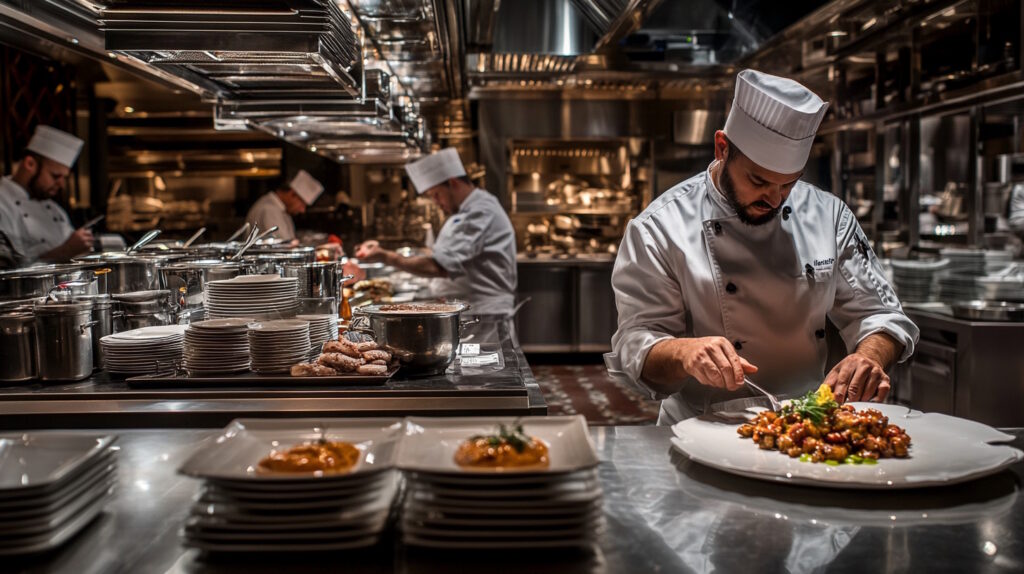Article Insights
– 💡 Learn the nitty-gritty of restaurant cash flow and why it’s indispensable.
– 💡 Discover budgeting and inventory techniques that can transform your financial standing.
– 💡 Explore how technology and marketing can boost your revenue and streamline operations.
– 💡 Find out why a financial advisor might be your secret weapon in cash flow management.
Mastering Cash Flow: Effective Strategies for Restaurant Success
Managing cash flow is a crucial aspect of running a successful restaurant. A well-running eatery isn’t just about delectable dishes and top-notch service—it’s about the savvy behind the scenes, especially when it comes to finances.
In an industry with high costs and fluctuating revenue, ensuring a healthy cash flow is the backbone of operational stability and growth. We’re here to arm you with effective strategies on how to manage cash flow in restaurants efficiently. Strap in, because financial mastery can safeguard your restaurant’s future.
The Lifeblood of Your Restaurant
Running a restaurant demands precision, creativity, and razor-sharp business acumen— and knowing the essence of restaurant cash flow management is essential.
At its core, cash flow refers to the movement of money into and out of your business, from serving an exquisite meal to purchasing fresh ingredients for the next one. Having a steady cash flow means you can cover your bills, innovate your offerings, and even set sights on broadening your horizons.
However, this is easier said than done, especially with challenges like seasonal fluctuations, meticulous inventory management, and unforeseen expenses.
these dynamics is crucial for restaurant owners, and gaining insight by exploring resources like Understanding Cash Flow Management for Small Businesses can provide valuable knowledge applicable to various business sizes.
Decoding Restaurant Cash Flow
Grasping the components that influence cash flow will empower your financial planning. First, there are multiple revenue streams, such as traditional dine-in services, booming takeout options, catering for events, and much more.
Each channel generates income but managing them requires acute attention to detail. Once revenue streams are established, the next step is to track expenses, distinguishing between fixed expenses like rent and variable costs such as food supplies.
Each category has distinct characteristics, and managing them effectively is a smart way to improve cash flow in restaurants.
Your cash flow statement is a powerful tool—a snapshot of your cash inflows and outflows over any given period. By regularly reviewing this statement, you can identify trends and make informed decisions about your restaurant’s financial health.
Budgeting: A Blueprint to Financial Stability
Budgeting isn’t just a buzzword; it’s the bedrock of fiscal success. Creating a realistic budget tailored to your restaurant ensures you spend wisely while staying prepared for the inevitable surprises the culinary world throws your way.
Employ forecasting techniques by analyzing past sales data, seasonal trends, and forecasting for special occasions or holiday rushes to laminate possible future revenues.
Regular reviews of this budget are paramount, allowing you to make adjustments reflecting any operational changes or unexpected expenses.
Inventory Management: Protect Your Profits
Without inventory control, managing cash flow becomes a slippery task. Implement techniques like FIFO (First In, First Out) or JIT (Just In Time) to ensure ingredients are used effectively.
Reducing waste is another pillar—through portion control and aligning your menu with demand, you can significantly reduce unnecessary waste. Furthermore, cultivating strong relationships with suppliers can be a game-changing move, often leading to better pricing and payment terms.
Navigating Labor Costs
Manpower is vital, but managing labor costs judiciously can bolster your bottom line. Adaptable staffing levels based on anticipated customer flow allows you to optimize payroll expenses.
Cross-training staff enhances flexibility and service quality, making seamless operations during peak hours (and lulls) more attainable. By consistently monitoring labor costs against productivity, you can strike a harmonious balance between fiscal prudence and exemplary customer service.
Technology: Aiding Financial Fluidity
In today’s digital world, integrating state-of-the-art technology into your operations is no longer an option but a necessity.
Modern POS systems, which provide exhaustive insights into sales trends and inventory levels, become indispensable tools for managing cash flow.
Utilize accounting software to automate financial reporting and expense tracking—a seamless approach to restaurant cash flow management.
Additionally, embracing online ordering platforms paves the way for increased sales, furthering your financial flexibility.
Innovative Marketing to Revitalize Revenue
Crafting promotional campaigns for traditionally slow periods can inject life into your restaurant during downtimes. Loyalty programs serve to retain patrons and ensure ongoing business.
Additionally, never underestimate the power of social media—engaging posts can drive traffic and skyrocket brand visibility. Through these marketing channels, the prospects to improve cash flow in restaurants become tangible.
Setting Aside for Rainy Days
A robust cash reserve is your safety net. Establishing an emergency fund can cushion against sudden expenses like broken equipment or economic shifts.
Flexibility in managing cash flow helps adapt financial plans amidst fluctuations and ensures you ride out storms without jeopardizing daily operations.
Consistently setting aside funds cultivates resilience.
Consulting with financial advisors can provide a tailored perspective—hiring experts can wield insights into areas of improvement and inform strategic monetary decisions.
Advisors offer periodic financial analyses, helping pinpoint trends, and provide strategic guidance.
Charting Your Course Toward Success
For restaurant owners striving for unyielding success, a commitment to continuous learning becomes pivotal in maintaining robust cash flow.
Networking with fellow restaurateurs allows for sharing strategies and gaining inspiration from others’ experiences. Regularly reviewing and adjusting cash flow strategies encourages adapting to industry ebbs and flows seamlessly.
As you embark on the culinary journey, equipping yourself with knowledge and tools tailored to your unique scenario will prove invaluable.
By focusing on effective restaurant cash flow management practices, you’re not just navigating the complex financial landscape, you’re setting the stage for long-term growth and prosperity.
With these insights in mind, check out our SBA Loan Programs to learn more about the options available to you.








